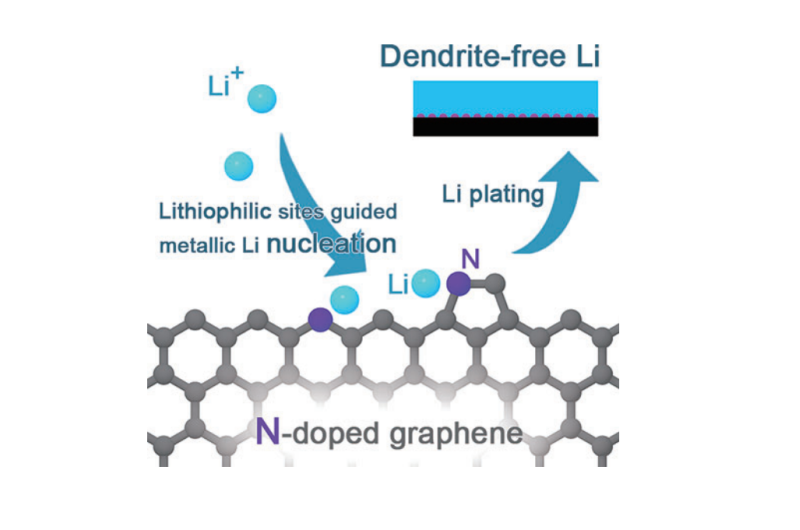Credit: Tsinghua University
Recently, Researchers in Tsinghua University have proposed a nitrogen-doped graphene matrix with densely and uniformly distributed lithiophilic functional groups for dendrite-free lithium metal anodes, appearing in the journal Angewandte Chemie International Edition.
Since lithium metal possesses an ultrahigh theoretical specific capacity (3860 mAh g-1) and the lowest negative electrochemical potential (-3.040 V vs. the standard hydrogen electrode), lithium metal has been regarded as the most promising electrode material for next-generation high-energy-density batteries. However, the application of lithium metal batteries is still not in sight. "Lithium dendrite growth has hindered the development of lithium metal anodes," said Dr. Qiang Zhang, the corresponding author, a faculty at Department of Chemical Engineering, Tsinghua University. "Lithium dendrites that form during repeated lithium plating and stripping cycles can not only induce many 'dead Li' with irreversible capacity loss, but also cause internal short circuits in batteries and other hazardous issues."
"We found that a lithiophilic material with good metallic lithium affinity can guide the lithium metal nucleation. Therefore, designing a lithium-plating matrix with a high surface area and lithiophilic surface makes sense for a safe and efficient lithium metal anode," said Xiao-Ru Chen, an undergraduate student in Tsinghua University. "So we employed a nitrogen-doped graphene matrix with densely and uniformly distributed nitrogen containing functional groups to guide lithium metal nucleation and growth."
"The nitrogen containing functional groups are lithiophilic sites, confirmed by our experimental and DFT calculation results. Lithium metal can plate with uniform nucleation during the charging process, followed by growth into dendrite-free morphology. While on the normal Cu foil-based anode, the nucleation sites are scattered, which may cause lithium dendrite growth more easily," said Xiang Chen, a Ph.D. student at Tsinghua University.
With the lithiophilic nitrogen-containing functional groups, the N-doped graphene matrix can regulate the nucleation process of lithium electrodeposition. As a result, dendrite-free lithium metal deposits were obtained. Additionally, this matrix shows impressive electrochemical performance. The Coulombic efficiency of the N-doped graphene-based electrode at a current density of 1.0 mA cm-2 and a cycle capacity of 1.0 mAh cm-2 can reach 98 percent for nearly 200 cycles.
"We have proposed a new strategy based on lithiophilic site-guided nucleation to settle the tough dendrite challenge in this publication," said Qiang. "Further research is required to investigate and control the lithium nucleation in lithium metal batteries. We believe that the practical application of lithium metal anodes can be finally realized." The control of the nucleation process of lithium plating with a lithiophilic matrix has shed a new light on all lithium metal-based batteries, such as Li-S, Li-O2 and future Li-ion batteries.
More information: Rui Zhang et al. Lithiophilic Sites in Doped Graphene Guide Uniform Lithium Nucleation for Dendrite-Free Lithium Metal Anodes, Angewandte Chemie International Edition (2017). DOI: 10.1002/anie.201702099
Journal information: Angewandte Chemie International Edition
Provided by Tsinghua University
























